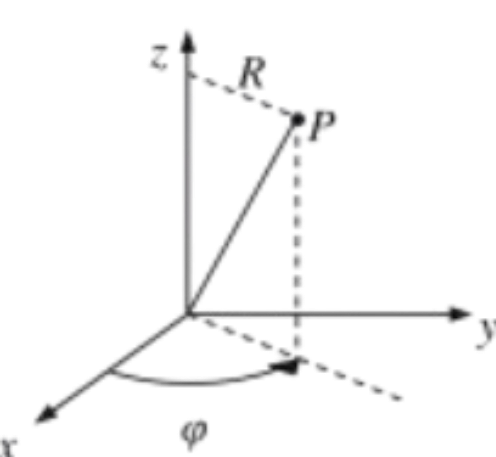Noninertial Frame of Reference
In the atmosphere, the Coriolis acceleration is responsible for wind
circulation patterns around centers of high and low pressure in the earth’s atmosphere.
In an inertial frame, a nonzero pressure gradient accelerates fluid from regions of higher
pressure to regions of lower pressure,
as \(\boxed{- \frac{\partial p}{\partial x_j}}\) of Navier-Stokes momentum equation and \(\boxed{-\nabla' p}\) indicates

Imagine a cylindrical polar coordinate system  with the z-axis normal to the earth’s surface and the origin at the center of a high- or low-pressure region in the atmosphere
with the z-axis normal to the earth’s surface and the origin at the center of a high- or low-pressure region in the atmosphere
 with the z-axis normal to the earth’s surface and the origin at the center of a high- or low-pressure region in the atmosphere
with the z-axis normal to the earth’s surface and the origin at the center of a high- or low-pressure region in the atmosphere
- If it is a high pressure zone, \( u_R \) would be outward away from the z-axis in the absence of rotation since fluid will leave a center of high pressure. The Coriolis acceleration \( -2\boldsymbol{\Omega} \times \mathbf{u} = -2\Omega_z u_R \mathbf{e}_\varphi \) is in the \(-\varphi\) direction in the Northern hemisphere, or clockwise as viewed from above
- If the flow is inward toward the center of a low-pressure zone, which reverses the direction of \( u_R \), the Coriolis acceleration is counterclockwise
1 Flight Environment PREVAILING WINDS. US National Weather Service.
2 Dennis Nilsson CC BY 3.0 license, via Wikimedia Commons.